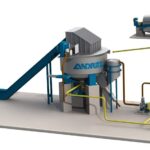Irrigation techniques have a critical input to increasing agricultural yields and quality for over a century. In the United States alone, more than half of all cropland irrigated, and the area has nearly doubled since 1960. However, areas still limited to rainfed agriculture face significant yield disadvantages. A continued supply of water and adequate land preparation will allow irrigation to expand further, but costs will remain a major limitation.
Increase Productivity And Reduce Labor Costs
In Austria, nearly one-fourth of the land is under agricultural production. In hilly areas, irrigation techniques have been used to increase productivity and reduce labor costs. The Po Valley is the most fertile part of Italy, with evenly distributed precipitation throughout the year. As one moves southward, rainfall decreases rapidly. In Puglia, the coastal region can register as little as 12-16 inches of rainfall a year, while the Alpine region receives 118 inches annually.
Employ Sprays And
Aside from the use of drip irrigation in Austria, many of the developed nations also employ sprays and tubes to distribute water evenly over the land. These methods have widely used in areas with irregular rainfall and drought conditions. Generally, water for irrigation comes from groundwater, springs, surface water, treated wastewater, and desalinated water. A study shows that a higher percentage of irrigated land in the United States than in other countries reveals greater agricultural production.
Great Advantage for the Farmers
What are the irrigation techniques in Austria the USA? Compared to the United States, irrigation is used by most countries. In the USA and Europe, most farms are owned by families and the land is divided into four different types based on the climate. This is a great advantage for the farmers, but it is not a good situation for the environment. If the water supply becomes a serious problem, the farmers will have no choice but to abandon the agricultural practices.
Advanced Techniques
The United States and Canada use different methods of irrigation. The latter is more efficient, but not necessarily sustainable. For example, in the USA, the amount of bluewater extracted in the USA is double that of rainfed agriculture. The difference does not in the amount of water, but in the amount of water the crops have irrigated. Moreover, fewer than 5% of the cultivated land in Africa irrigated, and only a tiny fraction of this done with advanced techniques.
High Water Stress
While water availability is a huge concern for the environment, the efficiency of irrigation methods is also important. The World Resources Institute estimates that more than two-fifths of the cropland in the world is subject to high water stress. Most crops have grown in these areas. The main reason is that these regions are more resistant to droughts than other countries. They are able to use more water than the rest of the world.
Major Cause of Environmental Pollution
The World Resources Institute has conducted a study on cropland and found that approximately 28% of cropland a water-stressed. Most of this area is dry, which means that crops like cotton and wheat can grow in water-stressed soil. This is a major cause of environmental pollution. In developing countries, there limited water availability and limited knowledge about common agronomic techniques.





